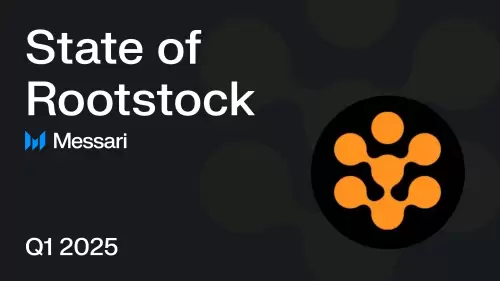 |
|
 |
|
 |
|
 |
|
 |
|
 |
|
 |
|
 |
|
 |
|
 |
|
 |
|
 |
|
 |
|
 |
|
 |
|
The presence of hydrogen in a sample is usually a bad thing in neutron scattering experiments
The presence of hydrogen is usually a bad thing in neutron scattering experiments, but now researchers in the US have turned the tables on the lightest element and used it to spot fake antique coins.
Relative to other types of electromagnetic radiation, neutrons can travel relatively large distances in materials without being absorbed. This property is useful for probing the bulk properties of materials, especially when the neutrons’ wavelengths are on par with the atomic separations in a material. At these wavelengths, neutrons can be scattered by atoms in a material, and the relative phases and amplitudes of the scattered waves can be measured to reconstruct images of the material’s structure.
For example, in biological structure determination, proteins, DNA and other biomolecules are usually placed in a solution and the resulting scattering data are used to determine the 3D structure of the molecule in the solution. However, hydrogen-1 nuclei (protons) are very good at scattering neutrons in random directions, which creates a noisy background signal. For this reason, biological samples are usually “deuterated” – replacing hydrogen with deuterium – before they are placed in a neutron beam.
Special cases do exist, however, where this incoherent scattering of hydrogen can be useful – measuring the water content of samples, for instance.
Surfeit of hydrogen
Now, researchers in the US and South Korea have used a neutron beam to differentiate between genuine antique coins and fakes. The technique relies on the fact that the genuine coins have suffered corrosion that has resulted in the inclusion of hydrogen-bearing compounds within the coins.
Led by Youngju Kim and Daniel Hussey at the National Institute of Standards and Technology (NIST) in Colorado, the team fired a parallel beam of neutrons through individual coins (see figure). The particles travel with ease through a coin’s original metal, but tend to be scattered by the hydrogen-rich corrosion inclusions. This creates a 2D pattern of high and low intensity regions on a neutron-sensitive screen behind the coin. The coin can be rotated and a series of images taken. Then, the researchers used computed tomography to create a 3D image showing the corroded regions of a coin.
The team used this neutron tomography technique to examine an authentic 19th century coin that was recovered from a shipwreck, and on a coin that is known to be a replica. Although both coins had surface corrosion, the corrosion extended much deeper into the bulk of the authentic coin than it did in the replica.
The researchers also used a separate technique called neutron grating interferometry to characterise the pores in the surfaces of the coins. Pores are commonly observed on the surface of coins that have been buried or submerged. Authentic antique coins will be buried or submerged, whereas replica coins will be buried or submerged to make them look more authentic.
Small-angle scattering
Neutron grating interferometry looks at the small-angle scattering of neutrons from a sample and focuses on structures that range in size from about 1 nm to 1 micron.
The team found that the authentic coin had many more tiny pores than the replica coin, which was dominated by much larger (millimetre scale) pores.
This observation was expected because when a coin is buried or submerged, chemical reactions cause metals to leach out of its surface, creating millimetre-sized pores. As time progresses, however, further chemical reactions cause corrosion by-products such as copper carbonates to fill in the pores. The result is that the pores in the older authentic coin are smaller than the pores in the newer replica coin.
The team now plans to expand its study to include more Korean coins and other metallic artefacts. The techniques could also be used to pinpoint corrosion damage in antique coins, allowing these areas to be protected using coatings.
As well as being important to coin collectors and dealers, the ability to verify the age of coins is of interest to historians and economists – who use the presence of coins in their research.
The study was done using neutrons from NIST’s research reactor in Maryland. That facility is scheduled to close in 2026 so the team plans to continue its investigation using a neutron source in South Korea.
The research is described in Scientific Reports.
Disclaimer:info@kdj.com
The information provided is not trading advice. kdj.com does not assume any responsibility for any investments made based on the information provided in this article. Cryptocurrencies are highly volatile and it is highly recommended that you invest with caution after thorough research!
If you believe that the content used on this website infringes your copyright, please contact us immediately (info@kdj.com) and we will delete it promptly.
-

-

-

-

-

-

- HTX and Justin Sun Launch $6M Mars Program Special Edition, Offering One User a Historic Space Journey
- May 08, 2025 at 10:40 pm
- SINGAPORE, May 8, 2025 /PRNewswire/ — HTX, a leading global cryptocurrency exchange, has launched the Mars Program: Special Edition, a landmark campaign that will send one user
-

-

-























![[2025.05.08] The two routes of Bitcoin continue to be observed, and gold is still bullish. [2025.05.08] The two routes of Bitcoin continue to be observed, and gold is still bullish.](/uploads/2025/05/08/cryptocurrencies-news/videos/routes-bitcoin-continue-observed-gold-bullish/image_500_375.webp)




































